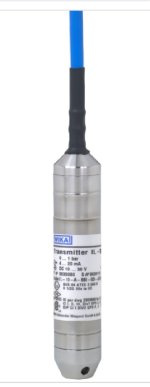Mas01
Member
We've got a submersible water level sensor in our tank. We drained it, but when there was still a bit of water in the tank (about 20mm measured with a ruler), the PLC was reading zero, as though the tank were completely empty. I contacted the sensor supplier who told me that the sensing head (diaphragm) was about 20mm from the bottom of the sensor and that until the diaphragm was submerged, no water depth would be detected.
Maybe I'm thinking too simplistically, but to make this correction in the PLC, I was thinking of just adding 20mm to my calculated (mm) value. Is that okay to do?

Maybe I'm thinking too simplistically, but to make this correction in the PLC, I was thinking of just adding 20mm to my calculated (mm) value. Is that okay to do?

Last edited:




